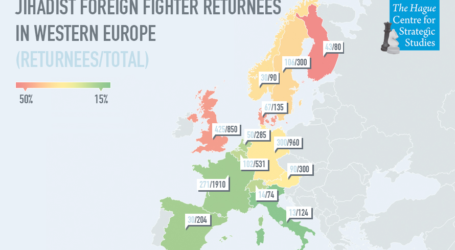Cellule dormienti di Isis? Ancora non si sono attivate…
Over the past four weeks, ISIS has run a series of articles in its weekly Arabic publication on a vital aspect of the type of threat posed by the organisation today. The central theme relates to how members, who are so far laying low during a military campaign against them, could regroup and resume operations after months of what the group describes as a “slumber” period.
The extensive coverage dedicated to this topic is timely. It follows a noticeable uptick in the group’s operations in recent months in much of Iraq and Syria, in both quantity and quality, since the beginning of the year, according to a senior official in the anti-ISIS global coalition.
The articles are focused on what the weekly newsletter, Al Naba, described as “amniyat”, the security measures necessary for a jihadi to operate, which is also used to describe the intelligence apparatus within ISIS that deals with such issues. In one of the articles, the extremist organisation admits that some jihadis took the term “sleeper cells” too literally and turned themselves completely dormant as they attempted to lay low.
The publication says jihadis should balance between precautions that enable them to operate in safety and excessive caution that removes the element of risk and thus leads to paralysis. Jihadis, it says, should view themselves as “operative”, not “sleeper” cells.
“If more precautions restrict the individual’s mobility and ability to achieve what’s required of him, these precautions turn into a mechanism that obstructs jihadi work instead of facilitating it … which could affect its success, continuity and ability to grow,” it continues.
The reason why these statements are significant is twofold. First, it provides an insight into the existence of operatives who are still loyal to ISIS but are not active because of the difficulties naturally caused by being on the run. This tendency is to be expected but it is significant that ISIS highlights it so publicly. Second, the series suggests that there is an ongoing effort by ISIS to awaken such sleepers and move from a defensive and hiding mode to an offensive one.
Members in charge of clandestine operations – the amniyat – had continued to operate as an underground organisation, even at the height of the group’s strength in 2014. By contrast, low-level members, as well as those whose jobs involved direct engagement with the population, such as in service provision, sharia courts and policing, would have been known to locals and subsequently to whoever took over after ISIS.
Those able to lay low and mask their identity will be the backbone of ISIS’s insurgency in the coming years. Their role involves the typical underground operations that ISIS conducts when it is not governing or fighting on the frontlines, such as targeted killings, planting improvised explosive devices, ambushes and hit-and-run attacks.
The ISIS push to awaken sleeper cells at this juncture is also worth a pause. The group could, for example, seek to minimise risks of arrest or targeting and preserve remaining loyalists at a time when Iraqi forces have the upper hand and their foreign backers, primarily the United States, are still in full operation mode. They have the readiness to respond to ISIS’s attempts to go on the offensive.
Indeed, the uptick in ISIS’s attacks in recent months happened earlier than many had anticipated. The group has begun to conduct what appear to be steady attacks in areas it had lost anywhere from a year to three years ago, rather than in newly-liberated areas. Some exceptions include Hawijah, which ISIS lost in October; its ability to attack there is attributable to the vacuum caused by pro-government forces taking over Kirkuk’s security instead of the Peshmerga.
In previous publications, ISIS also attributed its own recovery in areas like Kirkuk to the reduction in American air activities. This allowed the group to move from scoping an area to activating its cells to raiding houses of officials, conducting ambushes and launching hit-and-run attacks against mobile convoys or bases.
Curiously, more recovery activities can be discerned in Iraq than in Syria. ISIS has recently gone on the offensive against the Syrian regime near Abu Kamal, Deir Ezzor. It benefited from the operational pause announced by the US-led coalition early last month. American officials say that, despite claims by the regime that those areas were liberated in November, ISIS is still present in supposedly regime-held areas near Abu Kamal, on the western side of the Euphrates river. Extremists has since seized new bases and are inflicting steady casualties among the regime forces there.
But much of ISIS in Syria seems to be in hiding today, apart from the pockets it still controls near the Iraqi-Syrian border, outside Damascus and near the Israeli border. One possible reason is that it is still in the phase of “rasd”, or scoping, a process that involves learning the patterns of the enemy and existing gaps before launching a sustainable underground insurgency – a theme also explored in the latest series.
Based on recent trends of increased attacks and ISIS’s apparent push to fully revitalise sleeper cells, we can expect further increases in the group’s activities in the coming months. It is my contention that we have not yet seen the full potential of ISIS’s underground insurgency after its territorial demise and what damage it could inflict with its new tactics.





